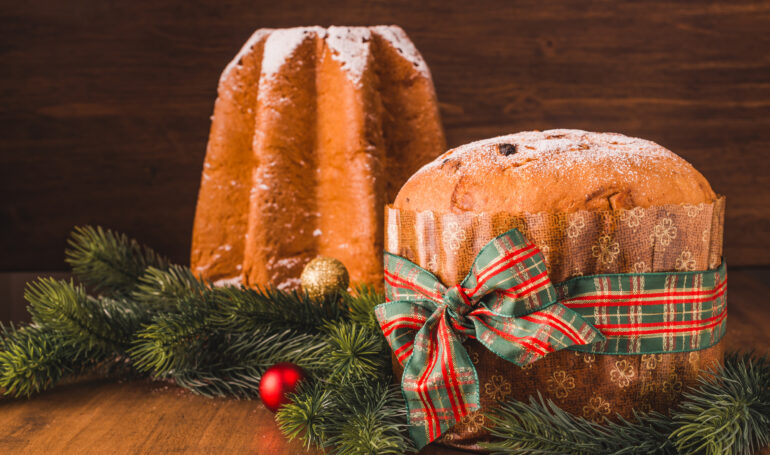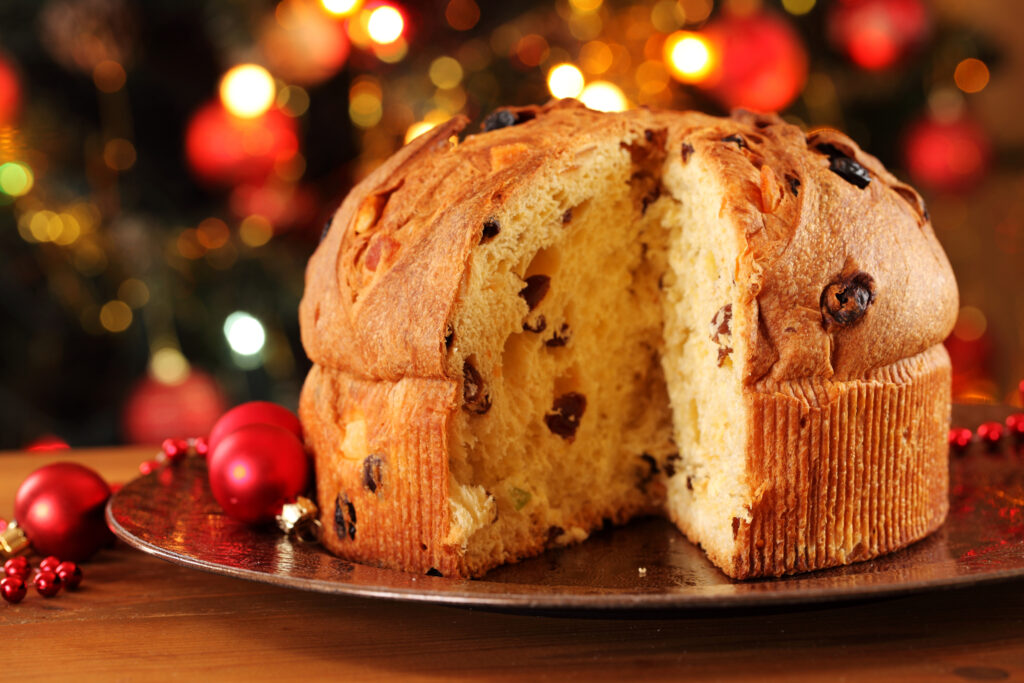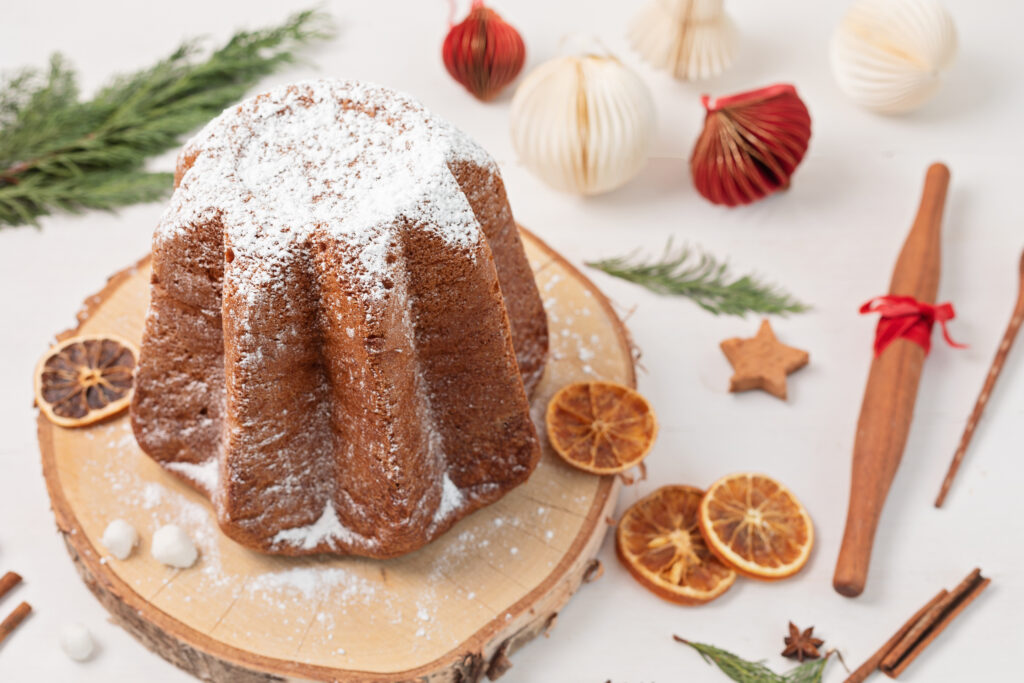
The Great Debate: Panettone vs. Pandoro
Christmastime in an Italian or Italian-American household means a lot of things. It means food, family, decorating, and setting the nativity scene. It also means that your breakfast for December is likely something sweet and seasonal. It’s most likely either Panettone or Pandoro.
But herein lies the conundrum. Does Panettone or Pandoro have the upper edge? Which do you prefer? Is one superior to the other?
In Christmastime gatherings with legions of more or less tolerated relatives, discussions may often turn to politics and sports. Still, one question is likely to heat up a conversation even more so than these topics: The eternal duel between the two most loved desserts of an Italian Christmas: Panettone vs. Pandoro. In my research, and by research, I mean asking friends and family what they prefer, there seem to be some firm favorites. Rare are the people that willingly admit to loving both. As if to say that loving both is in some fashion betraying the other.
So, let’s learn about these two beloved treats so you can make an informed decision on selecting a personal favorite.
Panettone
Panettone is the sweet symbol of the Christmas period, and it was born “by chance” in Milan during the holiday season. This is the typical Milanese Christmas cake, generally dome-shaped. The modern shape of the Panettone is attributed to Angelo Motta, who in 1919 perfected its production, increasing the leavening and cooking times, making it taller, and wrapping it with crown paper. The cake, or sweet bread, as some may wish to call it instead, is made from a mixture of flour, yeast, butter, and sugar with the addition of salt, egg yolks, sultanas, and candied fruit in pieces. A few are the theories of how this specialty bread was created, and as with many other dishes, the precise origins are uncertain, but here is the most likely and accepted theory.
Here is the most accredited legend about the origins of Panettone. The protagonist is Ludovico il Moro, a lord in Milan in the year 1495. It’s Christmas Eve, and folks are gathered around colossal tables, ready to celebrate with a lavish meal. In the kitchens, the cooks are all engaged in preparing dishes and delicacies that are very popular with diners. They are so busy that the head cook asks a young man named Toni, a 12-year-old boy, to supervise the baking of the large donut-like sweets in the oven. What is slowly rising in the ovens in Palazzo Reale is the dessert that will be served at the end of the meal and must be perfect to conclude the Christmas Eve celebrations worthily.
But something goes wrong. Poor Toni, tired after days of intense work helping in the kitchen, falls asleep. A burning smell begins to emerge. The boy sleeps only a few minutes, but they are decisive in blowing up all the donuts, which all burn.
A Happy Accident
The boy then, frightened by the reaction of the head cook and the diners still eager for food, does not know how to justify himself. Until he remembered the dessert he had prepared for himself and his friends using the leftovers of the donut dough, to which he had subsequently added eggs, butter, candied fruit, and raisins. So he decides to risk everything and offer it to the head chef as a dessert for the guests of the Duke, lord of Milan.
The head cook, at first doubtful, is entranced by the scent and surprised by the domed shape of the cake that he decides to serve it to the diners. The Duchess tastes it first. She opens her mouth, chews slowly, and then declares: “Excellent!” And all the guests agree with her. The dessert is enjoyed by all, accompanied by good wine.
At this point, the Duke congratulates the head cook, who does not reveal that it was Toni who prepared it. But lies, as we know, have short legs, and soon, the truth spreads in Milan. And on everyone’s lips, the dessert served to the Duke is called “il pan di Toni.” Years pass, and the recipe crosses the Milan walls, spreading throughout Italy and changing from “pan di toni” to Panettone.

Pandoro
On the other hand, Pandoro is the typical Veronese Christmas cake, whose main ingredients are flour, sugar, eggs, butter, cocoa butter, vanilla, and yeast. It has a truncated star shape, usually eight-point, and is usually served simply with powdered sugar.
The birth of Pandoro presents a very complex tradition: some even see a first form dating back to the first century AD, the recipe of a cook named Vergilius Stephanus Senex, which involved the preparation of a sweet bread by adding butter.
However, the surest ancestor of Pandoro is Nadalin, a dessert invented in Verona in the thirteenth century to celebrate the first Christmas under the Scala family. It begins to take shape probably thanks to the influence of “pan de oro,” or golden bread, a sweet bread served in Renaissance Venice on the tables of the wealthiest residents. It got its name from adding eggs to the dough, making it more golden.
The modern form of Pandoro has a precise date of birth: Tuesday, October 14, 1884; that day, the Veronese pastry chef Domenico Melegatti presented the patent for a Christmas cake to the Ministry of Agriculture and Commerce of the Kingdom of Italy. Also, in this case, what varies considerably is the height of the cake and the addition of even more butter and eggs, which make its dough so fragrant and soft.

Calories
Shall we talk calories? Perhaps we shouldn’t, this is, after all, the holiday season. A time in which calories don’t count. But for those interested in such things, let’s briefly discuss which wins the calorie count: Panettone or Pandoro?
From a caloric point of view, much to my surprise, the Pandoro is slightly richer than its Milanese rival. A serving contains, on average, between 390 and 410 calories. Panettone, however, is no lightweight with around 330 and 360 calories per serving. At the same weight, Pandoro, light and airy though it may be, is more caloric. Given the more significant presence of saturated fats. Basically, due to a greater quantity of butter and eggs.
But the Biggest Question Remains: Which do Italians Prefer?
According to various data collected in Italy by trusted authorities (not my own personal friends and family) who study these trends, the winner is:
Panettone
Yes, indeed, Panettone remains the favorite for Christmas binges. The Milanese dessert is preferred by 46% of Italians, while the Pandoro is in second place with 37%. Third place goes to other typical local sweets, which account for 17%. Men strongly prefer Panettone, with 50% favoring it, over 33% selecting Pandoro.
My Preference
As for my personal preference? My vote goes firmly for the Pandoro. Its light (if not in calories) airy texture is what my tastebuds prefer. But want to know what I like even more than plain Pandoro? A Lemondoro. A Lemondoro is the traditional pandoro dough filled with limoncello pastry cream. Yes, indeed, this is the season of gluttony.
Leave a Reply

What to Pack for Italy
Cosa Mettere in Valigia per l'Italia
Everyone is always asking me what they should pack for Italy,
so I’ve created a quick reference guide that you can use for your next trip.
Hint: You don’t need nearly as much as you think you do!

One Comment
Pandoro is slso my favorite❤️